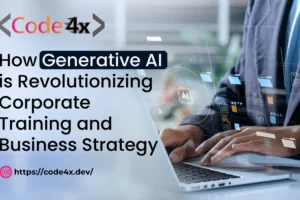
LLM Powered Business Intelligence – Turning Data into Actionable Insights and Scaling with Graph & Vector Databases
For leaders looking to leverage data to drive strategic decisions, LLM Powered Business Intelligence can be a game-changer. This article explores how LLMs can augment traditional BI tools, extract deeper insights, and generate predictive models that elevate business decision-making to the next level.
As businesses strive to remain competitive in an increasingly data-driven landscape, the ability to leverage large datasets for strategic decision-making has never been more crucial. Traditional business intelligence (BI) tools, while powerful, often fall short when tasked with extracting deeper insights from complex, unstructured data. This is where Large Language Models (LLMs) come in, revolutionizing the way organizations analyze data and extract actionable insights.
Moreover, the rise of Graph and Vector Databases adds another layer of innovation by enhancing the scalability and performance of LLM-based applications. Together, these technologies are transforming business intelligence and positioning enterprises to make more informed, predictive, and agile decisions.
The Evolution of Business Intelligence – From Descriptive to Predictive
Traditionally, BI tools have focused on descriptive analytics — providing historical reports, dashboards, and basic trend analyses. These tools offer valuable insights into what happened in the past. However, as businesses face rapidly changing markets, there is an increasing demand for predictive and prescriptive analytics, which focus on what will happen and what actions to take in the future.
While traditional BI tools often rely on structured data and predefined queries, LLMs can process a variety of data formats, including unstructured text, images, and complex data sets. This ability makes LLMs ideal for moving beyond descriptive analytics into predictive and prescriptive analytics. Here is a year-wise comprehensive analysis of growth from descriptive to predictive business analytics.

LLMs – Transforming Business Intelligence
LLMs, such as OpenAI’s GPT series and Google’s BERT, are capable of processing vast amounts of both structured and unstructured data, enabling them to analyze information that traditional BI tools may not effectively handle. Their ability to understand and generate human-like text allows businesses to extract deep insights from customer feedback, social media posts, reports, and other data sources that previously required manual analysis.
Here’s how LLMs are augmenting traditional BI systems –
1. Understanding Complex Queries
Traditional BI tools rely heavily on structured queries and predefined reports. In contrast, LLMs can understand and interpret complex natural language queries. Here is an Example query given and how LLMs can identify the recent trends on market.

2. Uncovering Deeper Insights
LLMs have the capability to recognize patterns and anomalies within unstructured text, audio, and visual data. By combining these insights with structured data from traditional BI systems, businesses can gain a more holistic view of their operations. For example, an LLM could analyze sales data along with customer service logs to identify not only which products are underperforming but also why, based on customer feedback patterns.

3. Predictive Modeling
In addition to descriptive analytics, LLMs can be instrumental in predictive analytics by generating models based on historical data trends and behaviors. For example, using past sales performance, market trends, and customer behavior data, an LLM-powered system could predict future sales and suggest optimal marketing strategies, empowering leaders to make proactive decisions.

4. Automating Data Analysis
LLMs can automate much of the data analysis process, freeing data scientists and analysts to focus on higher-level strategic tasks. They can autonomously generate reports, interpret trends, and even suggest actions based on the data they process. This leads to faster decision-making and a significant reduction in manual data analysis efforts.

Enhancing Scalability with Graph and Vector Databases
While LLMs offer substantial benefits for BI, scaling these models for enterprise use presents its own set of challenges, especially when dealing with large and complex datasets. This is where Graph and Vector Databases come into play, enabling enterprises to scale their LLM-based applications effectively.
Graph Databases – Mapping Complex Relationships
Graph databases, such as Neo4j, AWS Neptune are designed to represent and store data in nodes and relationships, making them particularly useful for managing interconnected data. They are ideal for use cases like recommendation engines, fraud detection, and supply chain optimization, where data is highly relational.

- Enhancing LLM Performance – When combined with LLMs, graph databases can improve the model’s ability to reason and contextualize information. For instance, in a customer service scenario, an LLM can be used to process and generate natural language responses, while a graph database can provide a relational map of the customer’s history, product preferences, and potential issues, leading to more personalized and accurate responses.
- Improving Predictive Models – Graph databases can enhance predictive analytics by providing a framework to analyze how different entities interact with one another. For example, an LLM might predict a customer’s behavior based on their past interactions, but a graph database could offer deeper insights by understanding how that customer’s actions relate to those of similar customers.
Vector Databases – Storing and Searching High-Dimensional Data
Vector databases, like Pinecone and FAISS, store data as vectors (mathematical representations of data points) and are essential for semantic search, recommendation systems, and machine learning applications.
- Optimizing LLM Applications – Vector databases are particularly effective when working with LLMs, which often transform text and other data into high-dimensional vector representations. For example, in natural language search, an LLM converts a user query into a vector, and a vector database searches for similar vectors (i.e., similar meanings) across the dataset. This process enables LLMs to find relevant information faster and more accurately than traditional keyword-based search.
- Scalable Search and Retrieval – As enterprises adopt LLMs for tasks such as semantic search and content recommendation, vector databases offer a scalable solution for storing and retrieving data. This is especially beneficial when dealing with vast amounts of text data, such as legal documents, research papers, or customer feedback, where finding relevant information quickly is critical.

Combining LLMs with Graph and Vector Databases – A Case for Enterprise Scalability
For IT architects and technical leaders responsible for infrastructure and scalability, combining LLMs with graph and vector databases offers a powerful solution for enterprise-level applications. This architecture supports faster, more accurate data retrieval and deeper contextual understanding, allowing organizations to scale their AI-driven BI systems without sacrificing performance.
Use Case Example – Personalized Marketing
Consider a company that wants to deliver highly personalized marketing campaigns based on customer behavior. By using an LLM trained on product descriptions and customer feedback, the company can generate personalized product recommendations. The graph database would map out relationships between customers, products, and previous interactions, while a vector database would enable fast, semantic search to find relevant recommendations based on similar customer profiles. This approach allows the company to deliver precise, contextually aware marketing messages that resonate with individual customers.
Use Case Example – Fraud Detection
In the financial sector, LLMs combined with graph databases can be used for fraud detection. An LLM might analyze transaction data and identify suspicious patterns, while a graph database provides a relational view of all transactions across accounts. This combined system could identify fraud faster and more accurately by understanding how suspicious activities are connected across different entities.


Conclusion
LLM-powered business intelligence is not just a futuristic concept — it’s a practical solution for today’s data challenges. By integrating LLMs with existing BI tools, businesses can enhance data analysis, automate insights generation, and develop predictive models that drive smarter decision-making. With a market CAGR of 21.7% and increasing adoption rates across industries, predictive analytics is no longer just a nice-to-have — it is critical for making data-driven strategic decisions. For senior leaders focused on leveraging data to make strategic decisions, now is the time to explore the capabilities of LLMs. Investing in LLM-powered BI solutions and training teams on how to utilize these tools will position businesses to thrive in an increasingly data-driven world.



